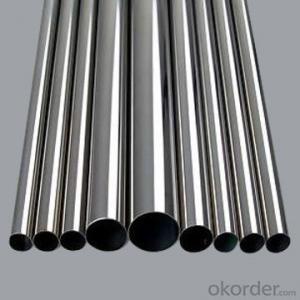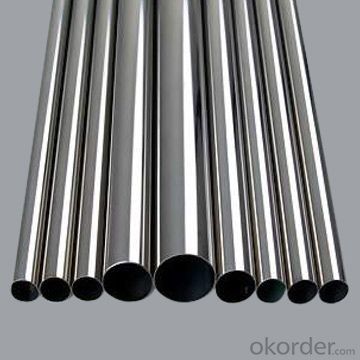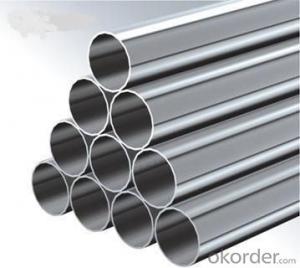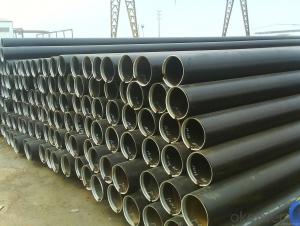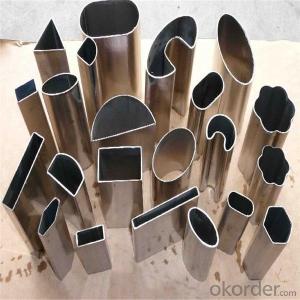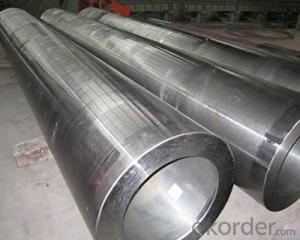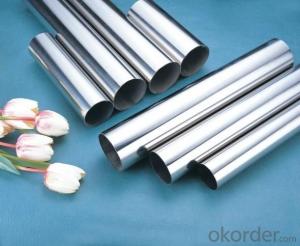Looking for agent !!! stainless steel pipe / tube 201 304 316 430
- Loading Port:
- Tianjin
- Payment Terms:
- TT OR LC
- Min Order Qty:
- 25 m.t.
- Supply Capability:
- 1000 m.t./month
OKorder Service Pledge
Quality Product, Order Online Tracking, Timely Delivery
OKorder Financial Service
Credit Rating, Credit Services, Credit Purchasing
You Might Also Like
Quick Details
| Standard: | JIS,AISI,ASTM,GB,ASTM A554 | Place of Origin: | China (Mainland) | Brand Name: | OKORDER |
| Model Number: | SUS 304 201 316 430 | Type: | Welded | Steel Grade: | 200,300,400 series |
| Application: | Decorative or industrial,stainless steel for handrail, fence, gate,furniture | Certification: | ISO | Welding Line Type: | ERW |
| Thickness: | 0.24mm-3.0mm | Outer Diameter: | 8-219mm | Diameter: | 6.35mm-219mm |
| product: | steel | Series: | 200,300,400 |
Packaging & Delivery
| Packaging Detail: | Each piece in polybag and several pieces per bundle,or according to customer's request. |
| Delivery Detail: | 25-30 days after deposit |
Specifications
stainless steel pipe
1. With 8--10.5% Ni and 18--20% Cr
2.Thickness :0.24--3mm
3.Customized specification
- Q: What is the significance of the schedule in stainless steel pipes?
- The schedule in stainless steel pipes refers to the thickness of the pipe walls. It is significant because it determines the pipe's strength, pressure resistance, and suitability for different applications. Different schedules are used for various purposes, such as high-pressure or corrosive environments, ensuring the appropriate performance and durability of the stainless steel pipes.
- Q: What is the difference between schedule 40 and schedule 80 stainless steel pipes?
- Stainless steel pipes are categorized into schedule 40 and schedule 80 based on their wall thickness. The primary distinction between the two lies in their pressure ratings. Schedule 40 pipes possess a lower pressure rating and are suitable for applications with low to medium levels of pressure. Conversely, schedule 80 pipes have a higher pressure rating and are utilized in high-pressure scenarios. The increased wall thickness of schedule 80 pipes enables them to handle elevated pressure levels, rendering them preferable for situations where the pipe necessitates enduring heightened stress or conveying fluids and gases at higher pressures. These pipes find common usage in industrial environments like oil refineries, chemical plants, and power plants, which are known for their corrosive atmospheres and high-pressure requirements. In contrast, schedule 40 pipes are more commonly employed in residential and commercial settings such as plumbing systems, water supply lines, and HVAC systems, where lower pressure demands are usually encountered. To ensure secure and efficient operation, it is crucial to carefully consider the specific requirements of the project and seek advice from a professional in order to determine the appropriate schedule of stainless steel pipe.
- Q: Can stainless steel pipes be used for steam systems?
- Yes, stainless steel pipes can be used for steam systems. Stainless steel has excellent resistance to high temperatures and corrosion, making it a suitable material for steam applications. It ensures reliable and long-lasting performance in steam systems, providing a safe and efficient transportation of steam.
- Q: Are stainless steel pipes more expensive than other types of pipes?
- Generally speaking, stainless steel pipes tend to be pricier compared to other pipe variants. This can be attributed primarily to the expensive raw materials utilized in their production, along with the intricate manufacturing procedures involved. In addition, stainless steel pipes boast numerous advantages over alternative options, including exceptional resistance to corrosion, heightened durability, and the capacity to withstand extreme temperatures. These factors collectively contribute to their elevated price range. Nevertheless, for many applications, the long-term benefits and superior performance of stainless steel pipes often outweigh the additional cost, justifying their investment.
- Q: How are stainless steel pipes joined or connected?
- Stainless steel pipes are typically joined or connected through various methods depending on the specific application and requirements. One common method is welding, where the pipes are fused together using heat to create a strong and durable connection. This can be done through various welding techniques, such as TIG (Tungsten Inert Gas) or MIG (Metal Inert Gas) welding. Another method is through threading, where the ends of the pipes are threaded and then screwed together using pipe fittings. This is a popular method for smaller diameter pipes or when disassembly is required. Additionally, stainless steel pipes can also be connected using compression fittings, which involve using a compression ring or ferrule to create a tight seal between the pipes. This method is often used for connecting pipes with larger diameters or in situations where frequent disassembly is necessary. Overall, the method of joining or connecting stainless steel pipes depends on the specific requirements of the project, including factors such as pipe size, pressure, temperature, and the need for disassembly.
- Q: Mechanical properties of stainless steel tubes
- High temperature fatigue is the process of damage to fracture due to repeated stress changes in the material at high temperature. The results show that, at a certain high temperature, the fatigue strength of the 8 power high temperature of 10 is 1/2 of the high temperature tensile strength at this temperature.
- Q: Where is the difference between seamless steel pipe and welded pipe?
- 1., the appearance of seamless steel pipe and welded pipe difference in the welded pipe wall welded tendons, and seamless No.2. seamless pipe pressure is higher, welded pipe is generally in 10 or so MPa, now welded pipe to do seamless processing.3. seamless steel tube is formed in the rolling process. Welded steel pipes need to be welded after coiling, and spiral welding and direct welding are generally used. Seamless performance is better, of course, the price is higher.
- Q: What is the typical wall thickness for stainless steel pipes?
- Depending on the application and specific requirements, the wall thickness of stainless steel pipes can vary. Generally, there is a wide range of wall thickness options available for stainless steel pipes. For typical applications like plumbing or industrial use, the wall thickness can range from Schedule 5S (0.049 inches or 1.24 mm) to Schedule 80S (0.218 inches or 5.54 mm). It's worth mentioning that for specialized applications or projects with specific requirements, the wall thickness can be customized accordingly. In summary, factors such as the intended use, pressure requirements, and structural considerations should be taken into account when selecting the appropriate wall thickness for stainless steel pipes.
- Q: What is the working temperature range for stainless steel pipes?
- The specific grade of stainless steel used determines the working temperature range for stainless steel pipes. Stainless steel pipes are generally capable of withstanding a wide range of temperatures, from extremely low to high temperatures. For pipe applications, the most commonly used austenitic stainless steel grades, such as 304 and 316, typically have a working temperature range from -196°C (-320°F) to 816°C (1500°F). These grades have excellent heat resistance and can maintain their strength and corrosion resistance even at elevated temperatures. However, it's important to note that the working temperature range can vary depending on the specific alloy composition and application requirements. Specialized stainless steel grades like duplex or super duplex stainless steels may have different temperature limits due to their unique characteristics. To determine the specific working temperature range for a particular grade of stainless steel pipe, it is always recommended to consult the manufacturer's specifications and guidelines. Additionally, factors such as pressure, corrosive environment, and thermal cycling should be considered when determining the appropriate working temperature range for stainless steel pipes.
- Q: How do stainless steel pipes compare to PEX pipes?
- Stainless steel pipes and PEX pipes have different characteristics and applications. Stainless steel pipes are known for their strength, durability, and resistance to corrosion, making them ideal for high-pressure and high-temperature applications. They are commonly used in industrial settings and for water supply systems. On the other hand, PEX pipes are flexible, lightweight, and easy to install, making them suitable for residential plumbing systems. PEX pipes have good resistance to freezing and are less prone to leaks compared to other materials. Ultimately, the choice between stainless steel and PEX pipes depends on the specific needs and requirements of the project.
Send your message to us
Looking for agent !!! stainless steel pipe / tube 201 304 316 430
- Loading Port:
- Tianjin
- Payment Terms:
- TT OR LC
- Min Order Qty:
- 25 m.t.
- Supply Capability:
- 1000 m.t./month
OKorder Service Pledge
Quality Product, Order Online Tracking, Timely Delivery
OKorder Financial Service
Credit Rating, Credit Services, Credit Purchasing
Similar products
Hot products
Hot Searches
Related keywords
